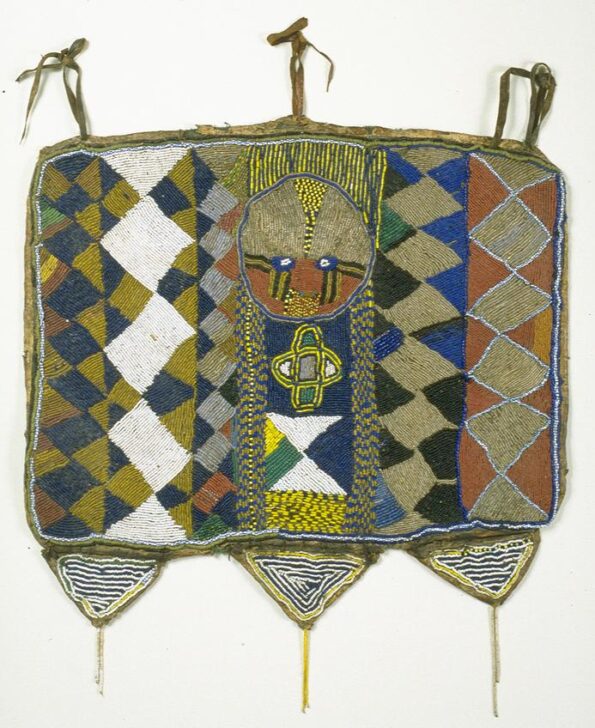Beaded Panel
Yoruba

Description
Subject Matter:
Beaded objects, such as this panel, highlighted the power and authority of their owners; in Yoruba society, only aláàsè, or those who could mediate forces in orun, the realm of orisas (gods) and spirits were allowed to wear beads. While it is not known in what context this panel would have been used, it is similar to dance panels called yata. These panels were sometimes worn by followers of Osun, the orisa of rivers and medicinal waters. Attached to and worn across the body while dancing, the colors and designs may have been chosen to honor various orisas. The round face and interlace pattern seen on this panel are motifs found on other beaded objects belonging to royalty or Ifa diviners. The interlace pattern is called salubata and associated with royalty, while the face motif speaks to the importance of the head in Yoruba culture as the ori inu, or inner head, is where a person's ase (life force or destiny) is held.
References Cited:
Drewal, Henry John and John Mason. 1998. Beads Body and Soul: Art and Light in the Yoruba Universe. Los Angeles: UCLA Fowler Museum of Cultural History.
Drewal, Henry John, John Pemberton and Rowland O. Abiodun. 1989. Yoruba: Nine Centuries of African Art and Thought. New York: Center for African Art.
Pemberton, John, III. 2012. African Beaded Art: Power and Adorment. Northampton, Massachusetts: Smith College Museum of Art.
Physical Description:
Cloth panel bound in leather with multi-colored beadwork. There are three evenly spaced leather ties across the top, while the bottom has three small, triangular panels attached, each with two strings of beads hanging down. The center of the panel has a face with an interlace pattern below. The rest of the panel has patterns of zig-zags and diamonds in various colors.
Usage Rights:
If you are interested in using an image for a publication, please visit https://umma.umich.edu/request-image/ for more information and to fill out the online Image Rights and Reproductions Request Form.